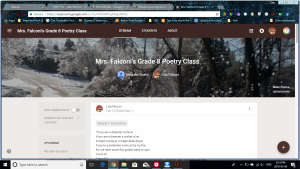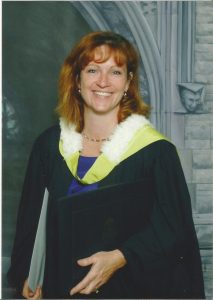 Initially, I didn’t believe developing the content for my module would be very difficult as I chose a topic that I already have some content for and it is a unit I feel is engaging for my students. However, when developing an online course, there are other considerations that need to be acknowledged and as a result, I found it more challenging than expected. In Ciampa (2014), it states that “motivation is a necessary precondition for student involvement in any type of learning activity” (p. 82) and I imagine this to be even more true for elementary students participating in an online classroom. Below are some of the challenges and solutions that I experienced.
Initially, I didn’t believe developing the content for my module would be very difficult as I chose a topic that I already have some content for and it is a unit I feel is engaging for my students. However, when developing an online course, there are other considerations that need to be acknowledged and as a result, I found it more challenging than expected. In Ciampa (2014), it states that “motivation is a necessary precondition for student involvement in any type of learning activity” (p. 82) and I imagine this to be even more true for elementary students participating in an online classroom. Below are some of the challenges and solutions that I experienced.
Ongoing assessment is very important with elementary school students who require guidance and practice (Gibbs & Simpson, 2005, p. 9) so it was necessary for me to use tools that would allow me to provide online support. Since Google classroom is integrated with the GSuite of products, I created a Google document for each one of my activities. This would allow me to put feedback directly into the students’ documents hopefully alleviating anxiety they may have about their work. Continue reading
 Having worked at Ontario Hydro (OH) for 21 years, the road to my dream of becoming a teacher finally happened in 2003 when I was accepted to the University of Toronto’s Ontario Institute for Studies in Education program. I had always wanted to be a teacher and developed a love of technology at OH, first as a typist in the typing pool using magical word processing machines and then over the years as personal computers became popular with the many tools they offered such as Microsoft Word and email. OH offered many opportunities allowing me to earn my university degree at night school while continuing to work my way up the ladder with my career repeatedly moving into a teaching role. I began by training staff on email, moving onto teaching Microsoft Word and in my last position I trained both internal and external staff on the benefits of energy efficiency.
Having worked at Ontario Hydro (OH) for 21 years, the road to my dream of becoming a teacher finally happened in 2003 when I was accepted to the University of Toronto’s Ontario Institute for Studies in Education program. I had always wanted to be a teacher and developed a love of technology at OH, first as a typist in the typing pool using magical word processing machines and then over the years as personal computers became popular with the many tools they offered such as Microsoft Word and email. OH offered many opportunities allowing me to earn my university degree at night school while continuing to work my way up the ladder with my career repeatedly moving into a teaching role. I began by training staff on email, moving onto teaching Microsoft Word and in my last position I trained both internal and external staff on the benefits of energy efficiency.